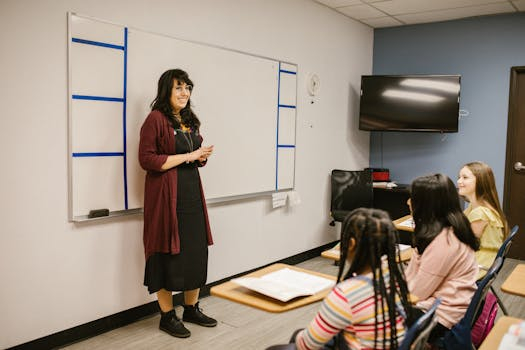Peer-to-Peer Learning Platforms: Students as Teachers
Are you tired of sitting in long, monotonous lectures and struggling to stay engaged? Do you wish you could learn from your peers and have a more interactive and dynamic learning experience? Look no further than peer-to-peer learning platforms – an innovative approach to education where students take on the role of teachers. In this article, we will explore the concept of peer-to-peer learning platforms and how they are transforming the traditional education system.
The Rise of Peer-to-Peer Learning Platforms
With the advancements in technology, traditional classrooms are slowly becoming a thing of the past. Peer-to-peer learning platforms have emerged as an alternative to the traditional education system, where students are actively involved in the learning process. These platforms provide students with the opportunity to learn, collaborate, and share knowledge with their peers in a fun and interactive way.
How Do Peer-to-Peer Learning Platforms Work?
Peer-to-peer learning platforms use a variety of methods to facilitate learning amongst students. One of the most common methods is through online discussion forums, where students can post questions, share resources, and engage in discussions with their peers. Some platforms also offer virtual classrooms, where students can participate in live lectures, interact with teachers, and collaborate with their fellow classmates.
Peer-to-peer learning platforms also utilize peer grading, where students assess and provide feedback on each other’s work. This not only helps students to develop critical thinking and communication skills, but it also promotes a sense of community and encourages students to learn from one another.
The Benefits of Peer-to-Peer Learning Platforms
Peer-to-peer learning platforms offer a multitude of benefits to both students and teachers. For students, it provides a more personalized learning experience, where they can learn at their own pace and engage with their peers. This can be particularly beneficial for students who struggle in a traditional classroom setting. It also promotes active learning, as students are more likely to participate and take an interest in the subject matter when learning from their peers.
For teachers, peer-to-peer learning platforms can reduce their workload and allow them to focus on other aspects of teaching, such as lesson planning and individualized instruction. It also provides teachers with valuable insights on the learning styles and needs of their students, allowing them to adapt their teaching methods accordingly.
The Future of Education
The concept of students as teachers is not a new one – in fact, peer-to-peer learning has been utilized in various forms throughout history. However, with the rise of technology, peer-to-peer learning platforms have become more accessible and efficient.
In the future, we can expect to see an increase in the use of these platforms in educational institutions, both in traditional and remote learning settings. By fostering a collaborative learning environment, peer-to-peer learning platforms have the potential to revolutionize the education system and make learning more engaging and effective.
In Conclusion
Peer-to-peer learning platforms have emerged as a novel approach to education, promoting active learning and collaboration amongst students. These platforms offer a range of benefits for both students and teachers, and their popularity is only expected to grow in the future. So, why stick to the traditional classroom setting when you can join a peer-to-peer learning platform and become a student and a teacher at the same time? It’s time to embrace the future of education and revolutionize the way we learn.










